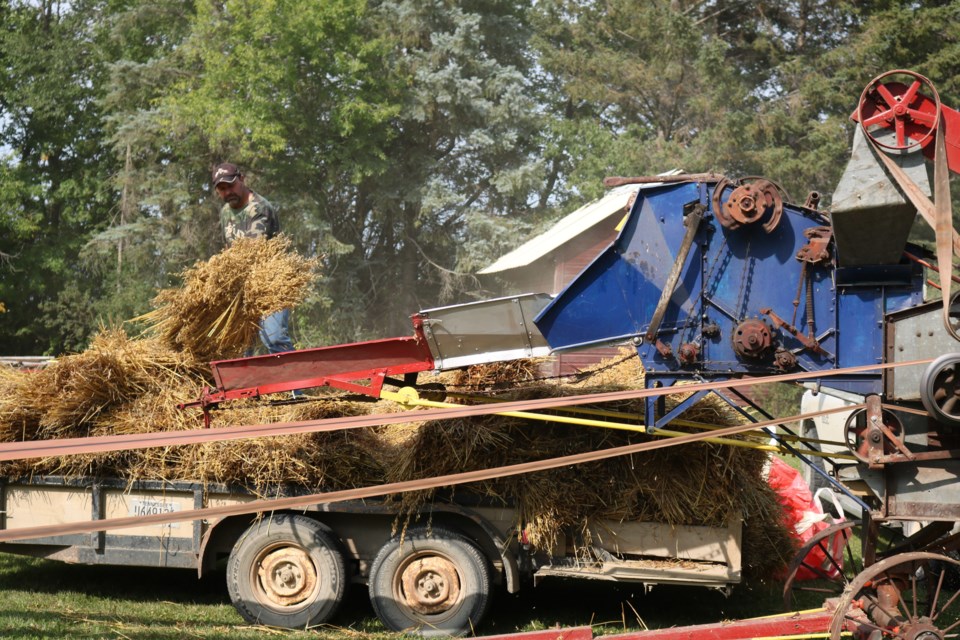It’s hard not to be a bit in awe that the somewhat strange looking collection of turn gears, pulleys and belts are still operational when they are flirting with, if not already having reached 75 years since they rolled off the lot as new.
The second machine was even more unusual as Ken Mack, a threshing machine lover from the Langenburg area actually took machines from several companies, a piece from each going to save one machine. The process meant a fair bit of customizing parts, but the machine was still working.
It’s curious in a sense how old machines have stood the test of time and when they have broken down how they were so repair friendly.
There was, for example, a lad on the bus when I was a youth, (the 1970s), who was not what one would have called a good student. He and classroom education and book learning just never got along very well.
But lift the hood of a vehicle and hand him a few tools and he could pull a carburetor, change a fan belt, or fix the timing almost with his eyes closed. Mechanical things ‘spoke’ back in those days to those who could hear it.
And, most of a certain age will know of someone who was a wizard fixing cars back then.
My dad told the story of an uncle back then too. If you had a broken alarm clock or wristwatch the uncle was the one to take it apart and fix it. He loved tinkering on such things. Dad joked if a watch was not broken the uncle simply took it apart to see what made it tick.
Look under the hood of car today and the simple action of changing oil is almost impossible for anyone without a fully stocked shop.
The combine today is even more ‘alien’ from its predecessor threshing machine.
There is more computing power on the combine now than the Apollo rocket that put the first man on the moon.
Data of yields and acres covered are gathered by sensors and sent to laptops and cellphones.
A problem can be monitored thousands of miles away and a repair crew dispatched carrying a laptop as the key element in repairing whatever is wrong.
Modern vehicles and farm equipment are not without technological marvels.
But, a question flashed through my mind watching the old threshing machine throwing straw one way and grain the other, is there a chance a combine rolling off the lot today will be operational in 2095?
Will anyone have a clue how to restore one dragged from a bush somewhere?
In a sad way the answer is almost assuredly no to both.




